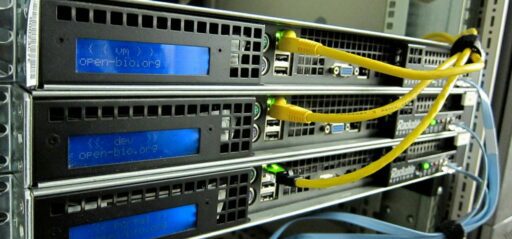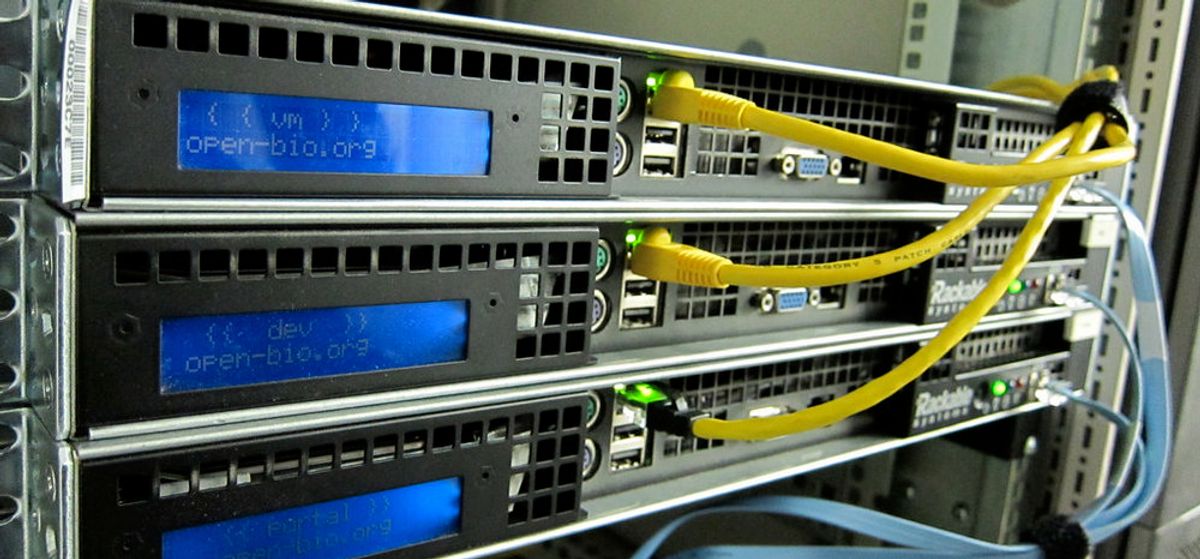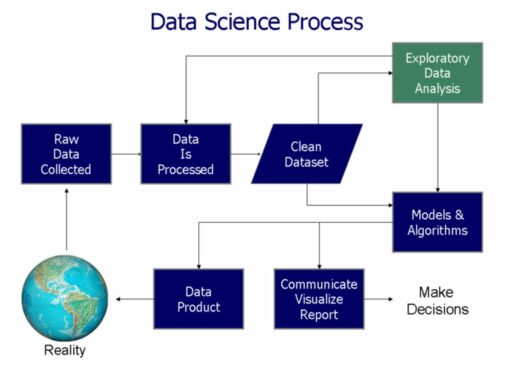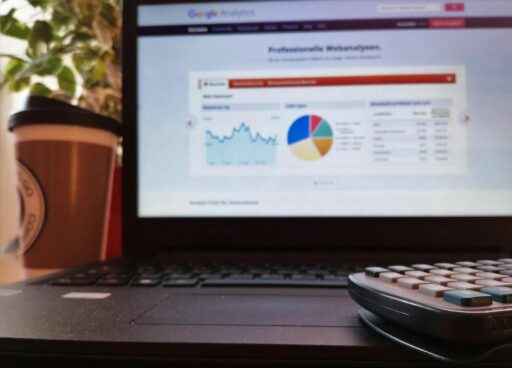Table of Contents
In the dynamic realm of information technology, the article ‘Embracing the Future: Innovations in Data Architecture’ delves into the transformative trends shaping the landscape of data management and infrastructure. With insights into the strategic adoption of data lakehouses, the pivotal role of cloud interoperability, and the burgeoning influence of generative AI, this piece offers a comprehensive view of the evolution underway in IT architecture. It underscores the importance of forward-thinking strategies that leverage the latest technological advancements to drive efficiency, innovation, and competitive advantage in an increasingly data-driven world.
Key Takeaways
- Data lakehouses are emerging as strategic enablers, providing businesses with a hybrid architecture that merges the scalability of data lakes with the governance of data warehouses.
- Cloud interoperability and integration across services are critical for creating a seamless IT architecture that supports innovation and new business models.
- AI-driven data management paradigms are setting the stage for the future of IT architecture, with industry giants pioneering intelligent environments.
- The strategic infrastructure adoption of generative AI has the potential to transform data-driven industries and offer a competitive edge.
- An evolutionary roadmap of IT architecture highlights the changing landscape of technology consumption and emphasizes interoperability, adaptability, and end-user experience simplification.
Data Lakehouses as Strategic Enablers

The Hybrid Architecture Advantage
The advent of Data Lakehouses marks a significant milestone in the evolution of data architecture. By merging the expansive storage capabilities of data lakes with the meticulous organization of data warehouses, this hybrid model offers a unique blend of flexibility and control. It’s a strategic enabler, allowing businesses to harness the raw power of big data while maintaining the integrity and reliability of their analytics.
Key benefits of adopting a Data Lakehouse include:
- Scalability to handle vast amounts of data
- Governance and security features akin to data warehouses
- Support for diverse data types and structures
- Enhanced query performance and data accessibility
The Data Lakehouse architecture is not just a technological innovation; it’s a business catalyst, unlocking new potentials for growth and competitive advantage.
As organizations continue to grapple with the question, ‘Which data architecture to choose?’, the Data Lakehouse presents itself as a compelling answer. It is a modern data storage and management architecture that is reshaping how companies approach data-driven decision-making.
Business Enablement through Data Management
In the current landscape of digital transformation, businesses are recognizing the strategic importance of data management. The integration of data lakehouses is not just a technical upgrade; it’s a business enabler that allows for the agile interpretation of data, leading to informed decision-making and a competitive edge.
- Streamlined Data Integration: By consolidating data from various sources, companies can access and analyze information more efficiently.
- Enhanced AI Capabilities: A unified data repository significantly improves the performance of AI systems, leading to better predictive analytics.
- Governance and Compliance: With structured data management, businesses can ensure adherence to regulatory standards while fostering innovation.
The adoption of data lakehouses is a testament to the power of strategic data management in driving business transformation and creating new opportunities.
As we look to the future, the role of data management in business enablement becomes increasingly clear. Organizations that leverage advanced architectures like data lakehouses are setting the stage for a new era of operational excellence and strategic growth.
Case Studies: DuPont and Other Pioneers
The journey of DuPont in the realm of data architecture is a testament to the power of strategic innovation. By adopting a data lakehouse model, DuPont has achieved a consolidation of diverse data sources, resulting in a robust platform for predictive analytics and operational agility. This move has not only streamlined their data management but also significantly enhanced their AI capabilities, allowing for real-time insights and a more responsive business model.
Similarly, other industry leaders are recognizing the value of integrating AI into their data strategies. Companies are now focusing on creating intelligent systems that can autonomously manage and analyze data, leading to more informed decision-making processes. The table below illustrates the impact of such innovations on business operations:
| Company | Improvement in Data Management | AI Integration Level |
|---|---|---|
| DuPont | High consolidation | Advanced |
| Shell | Streamlined operations | Progressive |
The shift towards data lakehouses and AI integration is not just a technical upgrade; it is a strategic evolution that positions companies for future challenges and opportunities.
Architectural Focus on Cloud Interoperability

Integration Across Cloud Services
The multi-cloud era has ushered in a new paradigm of ecosystem integration and strategic flexibility, where the ability to operate seamlessly across various cloud platforms is not just advantageous but essential. This integration is facilitated by a suite of technologies and practices that ensure services can communicate and function effectively, regardless of the cloud environment they reside in.
- DevOps and Automation: Streamlining deployment and management across clouds.
- Interoperability Technologies: Platforms and gateways that enable seamless service integration.
- Master Data Management: Ensuring data consistency and quality across systems.
- Semantic Compatibility: Aligning data meaning and context for unified analytics.
The focus on interoperability is not merely a technical challenge; it represents a strategic opportunity to innovate and develop new business models that leverage the strengths of diverse cloud ecosystems.
As businesses strive to become part of larger ecosystems, the commoditization of core IT services has made them more accessible and affordable. This shift is critical for businesses aiming to remain competitive in a landscape where digital technology is deeply integrated with business models.
Master Data Management and Semantic Compatibility
In the pursuit of a unified data ecosystem, semantic interoperability is crucial. It ensures that when data is shared among systems, its full meaning is preserved, enabling seamless collaboration and innovation. This is particularly important in environments where data is a strategic asset, as it allows for the consistent interpretation of data across different platforms.
Master Data Management (MDM) plays a pivotal role in achieving semantic compatibility. By centralizing critical data entities, MDM provides a single source of truth that enhances data quality and governance. This, in turn, supports interoperability by aligning data models and vocabularies across disparate systems.
The integration of early interoperability technologies, including platforms and gateways, alongside MDM, paves the way for new business models and opportunities for innovation.
The table below illustrates the benefits of implementing MDM in conjunction with semantic interoperability:
| Benefit | Description |
|---|---|
| Enhanced Collaboration | Facilitates better teamwork and decision-making by ensuring data consistency. |
| Innovation Acceleration | Enables the rapid development and deployment of new services and products. |
| Operational Efficiency | Streamlines processes by reducing errors and redundancies in data exchange. |
| Governance and Compliance | Ensures adherence to data standards and regulatory requirements. |
Innovation Through Early Adoption of Interoperability Technologies
The early adoption of interoperability technologies has proven to be a cornerstone for businesses aiming to stay ahead in the digital transformation race. Organizations that embrace these technologies pave the way for groundbreaking innovation and the development of new business models.
Interoperability is not just about connecting different systems; it’s about ensuring seamless communication and understanding across diverse platforms. Semantic interoperability, in particular, is crucial as it ensures that the full meaning of shared data is preserved and understood, leading to enhanced collaboration and efficiency.
By focusing on interoperability early on, companies can become more agile, both financially and strategically. This agility is achieved through the use of API management, Service-Oriented Architecture (SOA), and hybrid integration platforms.
The table below outlines some key technologies and their roles in fostering interoperability:
| Technology | Role in Interoperability |
|---|---|
| API Management | Facilitates secure and efficient data exchange |
| SOA | Promotes reusable service components |
| Hybrid Integration Platforms | Bridges on-premises and cloud environments |
As we explore cloud integration with platforms like Azure Data Factory, we simplify life with tools such as Samsung data migration, and we learn the essentials of data modeling for effective database design.
Intelligent Environments: The Near Future of IT Architecture

AI-Driven Data Management Paradigms
In the burgeoning era of artificial intelligence (AI), the conversation around data management and infrastructure is reaching a fever pitch. Companies are recognizing the imperative to integrate AI into their data strategies to stay competitive. The rise of data lakehouses exemplifies this trend, blending the vast scalability of data lakes with the structured governance of traditional databases to support AI initiatives.
- Without Data there is no AI: This is the key issue in many companies.
- Identifying the state of your data is crucial before embarking on AI projects.
- Leveraging existing digital systems and sensors can expand generative AI applications.
The architectural shift to AI-driven paradigms is not just about handling data; it’s about unlocking the transformative potential of AI to permeate and enhance everyday business operations.
The Rise of Data Lakehouses in Industry Giants
The adoption of data lakehouse architectures by industry giants marks a pivotal moment in IT strategy. These organizations are harnessing the power of lakehouses to consolidate vast data ecosystems, resulting in a significant leap in analytical capabilities and operational efficiency.
- Tencent and WeChat, among others, have demonstrated the effectiveness of this model, addressing common challenges such as slow query performance.
- The strategic integration of AI within these architectures further amplifies their potential, enabling predictive insights that are reshaping business landscapes.
The data lakehouse model is not just an incremental improvement; it is a transformative approach that integrates the best of both worlds: the flexibility of lakes and the structure of warehouses.
As these architectures become more prevalent, we witness a shift towards more agile and informed decision-making processes. The table below showcases a selection of industry leaders who have embraced the lakehouse model, highlighting the diverse applications and benefits it offers.
Shaping Business Strategies with Advanced Architectures
Advanced architectures are not just about the technology stack; they are the bedrock upon which future-ready businesses are built. The agility and scalability provided by these architectures allow businesses to pivot and adapt to market changes with unprecedented speed.
In the realm of advanced architectures, the focus is on creating systems that are not only robust and secure but also inherently flexible and capable of evolving over time. This is crucial for businesses that need to integrate new technologies or scale operations quickly.
- Adaptive Business Models: Leveraging architecture to support dynamic business strategies.
- Seamless Ecosystem Integration: Ensuring that all components work together harmoniously.
- Sustainability: Building systems with long-term viability in mind.
- Ethical Governance: Embedding responsible practices into the architectural framework.
The convergence of these elements within advanced architectures is what enables businesses to not only respond to current demands but also to shape and lead market trends. By investing in these sophisticated infrastructures, companies are positioning themselves at the forefront of their industries, ready to harness the next wave of technological advancements.
The Role of Generative AI in Business Evolution

Strategic Infrastructure Adoption for Generative AI
As businesses prepare for the transformative era of Generative AI, strategic infrastructure adoption becomes critical. This involves not only upgrading existing systems but also ensuring that the underlying data architecture can support the complex analytics and creative capabilities of AI. The journey towards a generative AI-driven future is marked by a series of strategic steps:
- Reevaluation of current systems and processes to identify areas for improvement.
- Ensuring that the data infrastructure is robust and agile.
- Leveraging existing digital systems and sensors for expanded AI applications.
- Partnering with startups or Big Tech to pilot and iterate generative AI solutions.
The potential impact of generative AI is profound, with estimates suggesting a $1+ Trillion growth by the end of the decade, particularly in data-rich environments like warehouses and data centers.
The adoption of generative AI is not just about technology; it’s about preparing an organization for a future where data management and analysis are central to success. By investing in strategic infrastructure now, businesses can unlock new capabilities and secure a competitive edge in the rapidly evolving digital landscape.
Transformative Potential of AI in Data-Driven Industries
The advent of generative AI heralds a new chapter in the evolution of data-driven industries. This technology is not merely a tool for efficiency; it is a catalyst for creating entirely new business models and revenue streams. The transformative potential of AI is evident across various sectors, from manufacturing to healthcare, where it enables predictive maintenance, dynamic pricing, and optimized resource allocation.
- Manufacturing plants use AI for predictive maintenance and production line optimization.
- Retail stores apply AI to achieve dynamic pricing and personalized customer experiences.
- Hospitals employ AI to optimize patient flow and improve resource allocation.
The strategic integration of AI into business operations can lead to unprecedented levels of operational efficiency and innovation.
Companies that successfully harness the power of generative AI can expect to see significant improvements in their operational landscape. It is a shift that goes beyond automating routine tasks, empowering teams to focus on strategic initiatives and creative problem-solving. The journey towards AI integration may be complex, but the potential rewards justify the endeavor.
Implementing Generative AI for Competitive Advantage
The advent of generative AI has ushered in a new era for businesses, transcending mere automation to become a catalyst for innovation. By harnessing the power of generative AI, companies can analyze complex data sets and uncover trends and opportunities at an unprecedented pace, ensuring a competitive edge in the market.
Generative AI is not just about optimizing existing processes; it’s about reimagining them. It enables the creation of new solutions that are both dynamic and adaptable to changing business landscapes.
The implementation of generative AI is more accessible than many might assume. It’s a journey that begins with integrating AI into current operations and evolves into a strategic tool that reshapes how businesses operate. The following list outlines the key steps in this transformative process:
- Assess current data architecture and AI readiness
- Identify areas where generative AI can have the most impact
- Develop a phased implementation plan
- Engage stakeholders and ensure ‘humans in the loop’
- Monitor, analyze, and iterate based on performance metrics
By following these steps, organizations can leverage generative AI to not only enhance operational efficiency but also to drive innovation and create solutions that were previously inconceivable.
An Evolutionary Roadmap of IT Architecture

The Changing Face of Technology Consumption
As we navigate through the epochs of IT architecture, a clear trend emerges: the simplification of technology consumption is paramount. The ‘consumption gap’—the divergence between the complexity of products and the ability of consumers to utilize them—has been widening, leading to what some call a ‘complexity avalanche’.
To bridge this gap, IT architects are focusing on creating more intuitive and user-friendly systems. This shift is not just about adding features; it’s about enhancing the user experience to make technology more accessible and effective for everyone. Steve Jobs famously stated that "Simple can be harder than complex," underscoring the effort required to achieve this simplicity.
The goal is to ensure that technology serves as a strategic enabler, fostering innovation and growth within intelligent environments.
The table below outlines the key aspects of this evolutionary shift:
| Aspect | Past | Present | Future |
|---|---|---|---|
| Focus | Feature-rich complexity | User-centric simplicity | Predictive and adaptive systems |
| Driver | Technology capabilities | Consumer expectations | Business and consumer symbiosis |
| Outcome | Consumption gap | Enhanced usability | Seamless integration |
By embracing these principles, organizations like NTT Data are pioneering business growth, while initiatives like Samsung’s data migration are simplifying life with a suite of tools encompassing AI, big data, and more.
Simplifying the End User Experience
In the pursuit of simplifying the end user experience, IT architecture is shifting towards more intuitive and flexible systems. The goal is to bridge the capability gap between complex functionalities and user comprehension. This shift is not just about technology, but also about the architectural skills required to create systems that are both powerful and accessible to the end user.
The architecture of the future is evolving to support technologies that make life easier, ensuring that the right people are touched with innovations that can profoundly influence life.
To achieve this, several strategies are being employed:
- On-demand access to applications and services with flexible pricing models.
- Introduction of native cloud architectures such as IaaS, PaaS, and SaaS, along with microservices, serverless computing, and containers.
- A security focus that is integrated into the architecture from the ground up.
- Digital innovation that encourages experimentation and agile methods, starting with minimum viable products and expanding functionality based on user feedback.
- DevOps and automation to streamline deployment and management, reducing the complexity for end users.
These strategies are converging to create a user-centric IT environment where simplicity and efficiency are paramount, enabling users to leverage technology to its fullest potential without being overwhelmed by its complexity.
The Future of IT Architecture: Interoperability and Adaptability
As the IT landscape continues to evolve, the future of IT architecture is increasingly defined by its interoperability and adaptability. The ability to integrate and manage a multitude of services across various platforms is no longer a luxury but a necessity for modern enterprises. This shift is not just about technology; it’s about enabling businesses to become more agile, both financially and strategically.
The emphasis on ecosystem integration and strategic flexibility is paramount, as it allows for advanced data analytics and AI capabilities to be leveraged across different cloud environments.
The role of IT architects is transforming to meet these demands. They are now tasked with creating interoperable cloud services, decentralized systems, and integrating edge computing to offer a simplified user experience. This involves a continuous exploration of data integration, analysis, and visualization, focusing on areas such as business intelligence, data governance, and data security.
The table below outlines the key components of interoperable IT architecture:
| Component | Description |
|---|---|
| Cloud Services Integration | Seamless connection of services across multiple cloud platforms. |
| Decentralized Systems | Autonomous systems that reduce reliance on central control. |
| Edge Computing | Processing data closer to the source to reduce latency. |
| Data Analytics & AI | Advanced tools for data analysis and artificial intelligence applications. |
Conclusion
As we stand on the brink of a new data-driven epoch, it is clear that the innovations in data architecture, such as the data lakehouse model and the integration of generative AI, are more than mere technological advancements; they are the bedrock upon which future business success will be built. Organizations that recognize and harness these innovations will not only survive the complexities of modern data management but will thrive, carving out new pathways for efficiency, growth, and competitive advantage. The journey ahead is challenging, yet ripe with potential for those willing to embrace the future and transform their data architecture into a strategic asset.
Frequently Asked Questions
What is a data lakehouse and how does it enable strategic business decisions?
A data lakehouse is a hybrid data management architecture that combines the vast scalability of data lakes with the structured governance of traditional data warehouses. It allows businesses to manage diverse data streams efficiently, providing a strategic advantage by enabling near real-time data access for predictive maintenance and operational efficiency.
How are companies like DuPont pioneering the use of data lakehouses?
Companies like DuPont are pioneering the use of data lakehouses by consolidating and streamlining data from their extensive histories of mergers and acquisitions. This approach ensures agile and efficient data management, enhancing their capabilities in predictive maintenance and operational efficiency, and unlocking the transformative potential of AI in their operations.
What role does cloud interoperability play in modern data architecture?
Cloud interoperability is crucial in modern data architecture as it enables integration across different cloud services. This fosters innovation and allows for the development of new business models by leveraging early integration technologies, master data management, and ensuring semantic compatibility.
How is generative AI influencing the evolution of business infrastructure?
Generative AI is influencing the evolution of business infrastructure by providing the tools to manage current data challenges and laying the foundation for future innovations. Businesses adopting generative AI are positioned to lead their industries by driving growth and innovation in a data-driven world.
What are the benefits of adopting a data lakehouse model in 2024 and beyond?
Adopting a data lakehouse model in 2024 and beyond offers businesses the ability to handle complex and diverse data streams with agility and efficiency. It also prepares the foundation for leveraging generative AI, thus ensuring businesses remain competitive and innovative in the evolving technological landscape.
How is IT architecture evolving to simplify the end user experience?
IT architecture is evolving to simplify the end user experience by focusing on interoperability, adaptability, and the integration of emerging technologies. This evolution is aimed at driving business value and ensuring that technology consumption is seamless and user-friendly.





